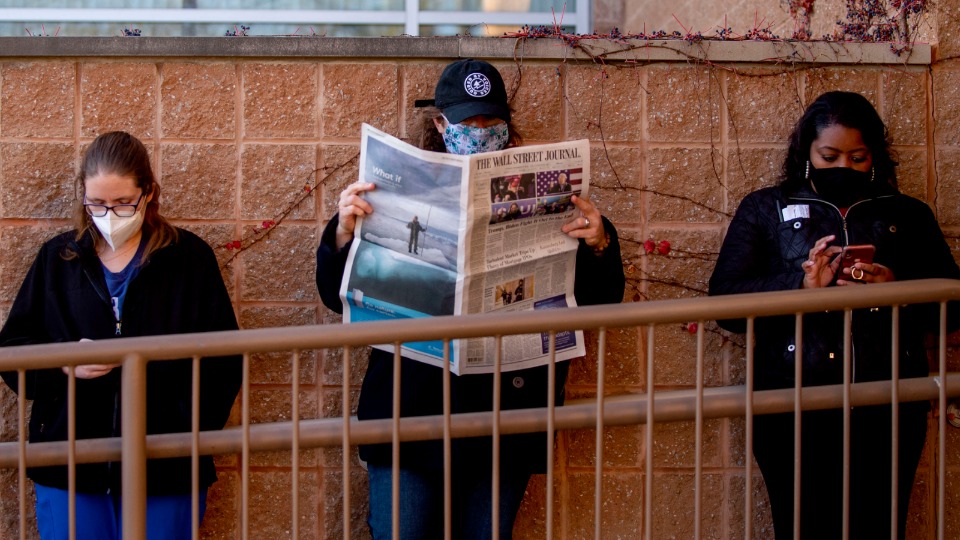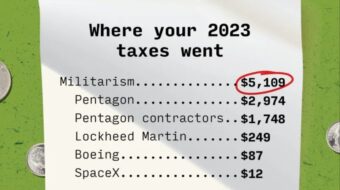
“The latest attempt to defy common sense is a study by Yale economists that purportedly finds the $600 federal enhancement to jobless benefits hasn’t affected the incentive to work. But the study offers limited evidence for this conclusion, which is contradicted by other data and real-world evidence.”
—Editorial Board, “Economists vs. Common Sense: If you pay people not to work, fewer will work. Except at Yale, it seems,” Wall Street Journal, August 2, 2020.
A Republican cabal in the U.S. Senate has pledged to never renew the weekly $600 unemployment bonus that offered a lifeline to more than 25 million Americans as they weathered the economic devastation of the COVID-19 crisis. In the words of Republican Sen. Lindsey Graham, the only way an extension of the $600 benefit would make it through the Senate is “over my dead body.” The House of Representatives passed the extension of the $600 benefit in May (as part of the Health and Economic Recovery Omnibus Solutions, or HEROES, Act).
Republican opposition to $600 a week in enhanced unemployment benefits is fueled by their unwillingness to ease the draconian effects of the false choice between working and not working when there is no job to be had, and reinforced by the supposed “common sense” propagated by the Wall Street Journal editors, among others.
This is all pretty rich, especially coming from Graham, a senator who voted to raise his own salary three times (and who currently receives an annual salary of $174,000) and from the editors of the Wall Street Journal, who are far removed from the everyday world of Main Street common sense. The editors’ “bedtime story”—to use a phrase from former Senior Advisor to the Treasury Department Ernie Tedeschi—makes little sense in an economy mired in the worst economic collapse since the Great Depression of the 1930s. And the loss of much-needed benefits only adds to the sleepless nights of those who are suffering the worst.
Overwhelming evidence supports quite a different bedtime story—one that calls for far more humane unemployment policies.
What Republican nightmares are made of
It is true. Many of the unemployed workers who received an extra $600 a week through the Coronavirus Aid, Relief, and Economic Security (CARES) Act, which was passed by Congress in March 2020, received more money than they had earned while working. Peter Ganong and two other University of Chicago economists found that was the case for about three-quarters (76%) of workers receiving weekly $600 payments and full state unemployment compensation from April through July.
But Marokey Sawo and Michelle Evermore of the National Employment Law Project calculated that for just 40% of unemployed workers were benefits greater than their previous total compensation (the sum of their wages and benefits). The intent of the Federal Pandemic Unemployment Compensation (FPUC) program was to provide unemployment benefits that would fully replace the missing wages of unemployed workers.
State unemployment compensation typically replaces about 40% to 45% of an unemployed worker’s prior earnings, though benefits vary from state to state. With state employment agencies not up to the task of determining and distributing benefits that would match an unemployed worker’s lost wages, Congress settled on adding a fixed benefit of $600 a week. The $600 weekly bonus payment (along with regular unemployment insurance benefits) would just replace the median weekly pay of U.S. workers, which is around $1,000. But the weekly $600 payment also pushed the total benefits of lower-income workers above their previous wages (or replaced more than 100% of their wages).
The FPUC benefits were critical to the survival of a range of workers. While the bulk of the $600 bonus went to unemployed workers receiving state unemployment benefits, workers who had exhausted their state unemployment benefits also received FPUC payments. So, too, did business owners and the self-employed, who received additional assistance from other CARES Act programs. But the $600 weekly FPUC payments ceased at the end of July and have yet to be renewed.
At odds with the evidence
The study conducted by the Yale economists that caught the attention of the Wall Street Journal editors is more credible than they suggest. The economists’ conclusion that enhanced unemployment benefits have not led to fewer people looking for work has not been “contradicted by other data” as the editors claim. Multiple studies, using a variety of data sets, have confirmed that enhanced unemployment benefits, even those that exceeded the previous wages of the recipient, have not led to a decrease in the number of people looking for work, or increased the number of the unemployed. (Vice Chair of the Congressional Joint Economic Committee (JEC), Representative Don Beyer of Virginia, has summarized five of these studies, including the Yale Study, on the JEC website, jec.senate.gov; see sidebar.)
Joint Economic Committee
Congressman Don Beyer, Vice Chair
Studies Show $600 Weekly Enhanced Unemployment Benefit Has Not Slowed Labor Market Recovery, August 6, 2020
- 1.) Dana Scott and Joseph Altonji et al., “Employment Effects of Unemployment Insurance: Generosity During the Pandemic,” Tobin Center for Economic Policy, Yale University
“We find no evidence that more generous benefits disincentivized work either at the onset of the expansion or as firms looked to return to business over time.”- 2.) Arindrajit Dube, “The Impact of the Federal Pandemic Unemployment Compensation on Employment: Evidence from the Household Pulse Survey,” Working Paper, July 31, 2020
“Overall these findings do not provide evidence supporting the claim that the FPUC has held back the labor market recovery.”- 3.) Ioana Marinescu, Daphne Skandalis, and Daniel Zhao, “Job Search, Job Posting and Unemployment Insurance During the COVID-19 Crisis,” July 30, 2020
“Overall, our evidence suggest that employers did not experience greater difficulty finding applicants for their vacancies after the CARES Act, despite the large increase in unemployment benefits.”- 4.) Alexander Bartik et al., “Measuring the labor market at the onset of the COVID-19 crisis,” NBER Working Paper No. 27613, July 2020
“We find no evidence that high UI replacement rates drove job losses or slowed rehiring.”- 5.) Ernie Tedeschi, Economist and Former Senior Advisor, U.S. Department of the Treasury., from a short thread on Twitter on the emergency $600 per week unemployment insurance payment, more formally known as Federal Pandemic Unemployment Compensation (FPUC)” July 26, 2020.
“The bottom line was that I found no evidence of any effect of labor market flows form more generous UI in May and June, controlling for other demographic factors.”Source: United States Congress Joint Economic Committee website.
Let’s look at a few of these studies, beginning with the Yale Study. Economists Dana Scott and Joseph Atlonji and several of their colleagues examined the weekly data from Homebase, a scheduling and timesheet system used by restaurants, bars, retail stores, and other service-sector businesses. They conclude that “the expansion in UI [Unemployment Insurance] replacement rates did not increase layoffs at the outset of the pandemic or discourage workers from returning to their jobs over time.” The Wall Street Journal editors have clearly misread the Yale study, for the authors never claimed that their findings hold in all economic settings. The Yale authors emphasize that “our results do not speak to the disemployment effects of UI generosity during more normal times, which is the subject of a vast literature.”
In another study, Ernie Tedeschi, now Managing Director and Policy Economist at Evercore ISI, a financial consulting firm, examined Current Population Survey data (which is a key source for labor force statistics) for evidence that the effects of the ratio of unemployment benefits to previous wages had affected the likelihood that workers left a job or accepted a new one. He found no such evidence. Like the authors of the Yale Study, Tedeschi makes clear that his results are specific to the pandemic economy. He writes: “If the economy were at full employment, if there was no pandemic, and if the FPUC were permanent rather than a temporary component of the UI system, I’d expect an effect.”
Finally, Ioana Marinescu, an economist at the University of Pennsylvania, and her co-authors, examined data on job listings and applications from the online platform Glassdoor from January to June 2020. They found that, after the unemployment bonus began in March, job applications stayed “relatively stable,” job openings continued to decrease, and the ratio of applications per vacancy rose. They concluded that “Employers who rely on online applications are not experiencing increased difficulties in finding applicants for their jobs after the CARES Act, which was a key concern with increasing benefits by $600 a week.”
An alternative bedtime story
Our alternative bedtime story begins this way: No matter how hard they search, unemployed workers can’t find jobs that don’t exist. The major cause of today’s high unemployment is the lack of jobs, not workers who have stopped searching for work and have left jobs unfilled. By the end of July, there were still 11.1 million fewer jobs in the U.S. economy than there had been prior to the pandemic in January 2020.
Renewing the FPUC supplemental unemployment benefits would boost spending and create jobs. Economist Mark Zandi from Moody’s Analytics estimates that $1 of renewed unemployment benefits would increase economic output by $1.64—a multiplier effect or bang for the buck that exceeds that of most forms of government spending. Harvard economists Marco Di Maggio and Amir Kerman calculate an even bigger effect, a $1.90 increase in output for each dollar of additional unemployment benefits.
Extending the $600 a week enhanced benefit would have protected 1.7 to 2.8 million jobs and lowered the unemployment rate by between 1.1 and 1.8 percentage points, according to rough estimates from the JEC. Workers will continue to return to work even if their unemployment benefits with the $600 a week FPUC supplement exceeds their previous wages. Tedeschi found that 70% of the unemployment insurance recipients who returned to work in June had been receiving unemployment benefits that were greater than their prior wages.
It makes sense, daresay common sense: A job, even in today’s economy, is more secure than enhanced unemployment benefits, and over time will pay more than unemployment insurance benefits. State unemployment benefits expire in less than a year, and in most states they expire within 39 weeks.
Our bedtime story, unlike the Wall Street Journal editors’ “common sense,” is consistent with the available evidence. And it supports generous unemployment insurance benefits that will contribute to a more robust economic recovery and actually help people get a good night’s sleep.
JOHN MILLER is a professor of economics at Wheaton College and a member of the editorial collective of Dollars & Sense, where this article first appeared. It is reprinted here with permission.












Comments